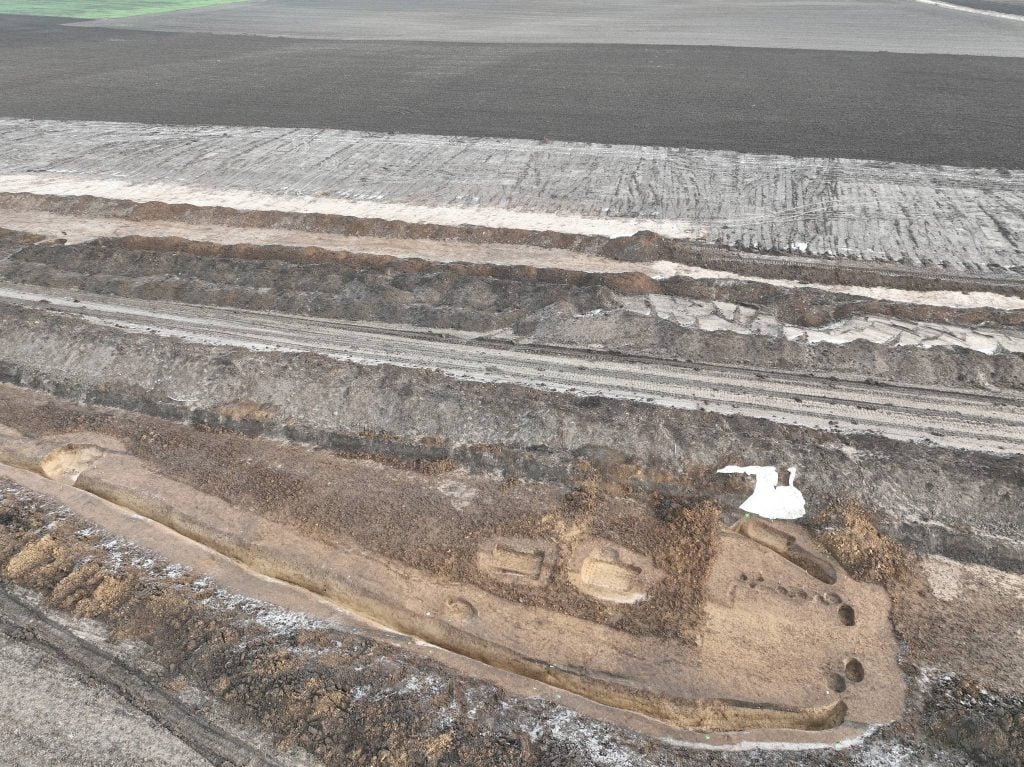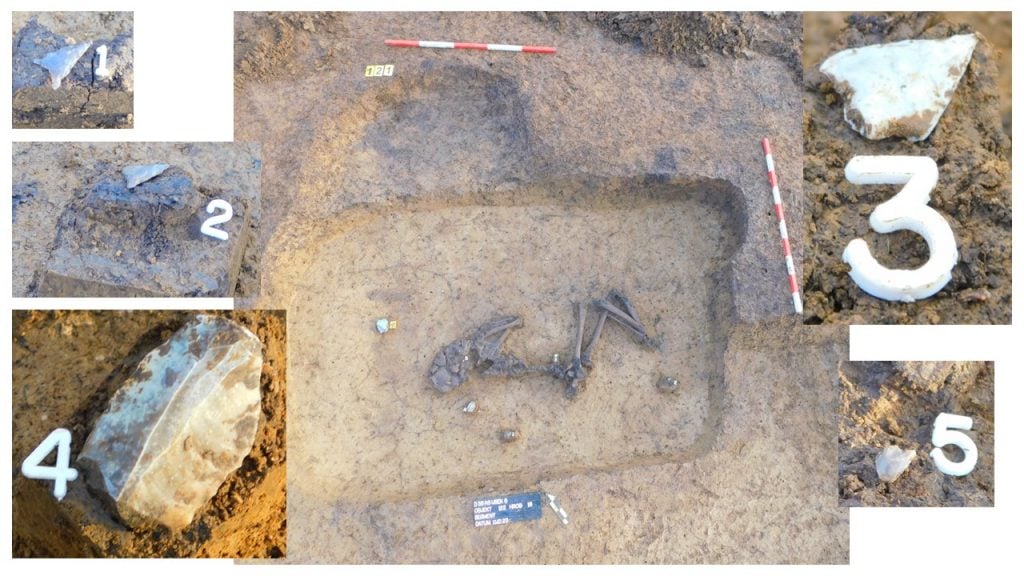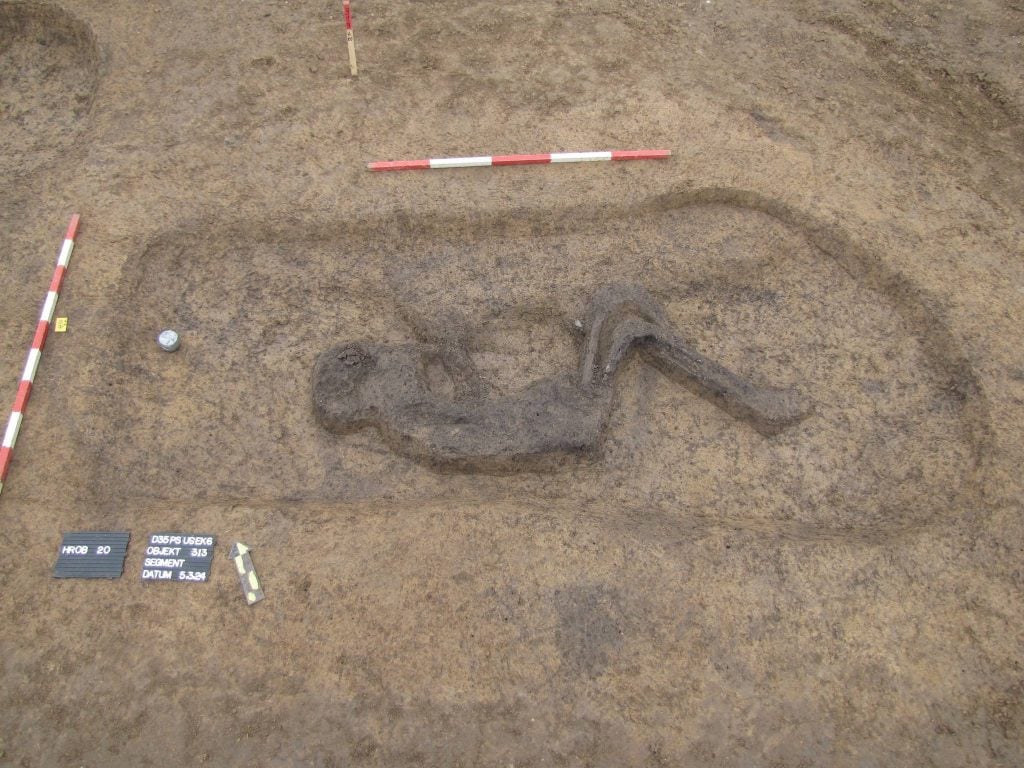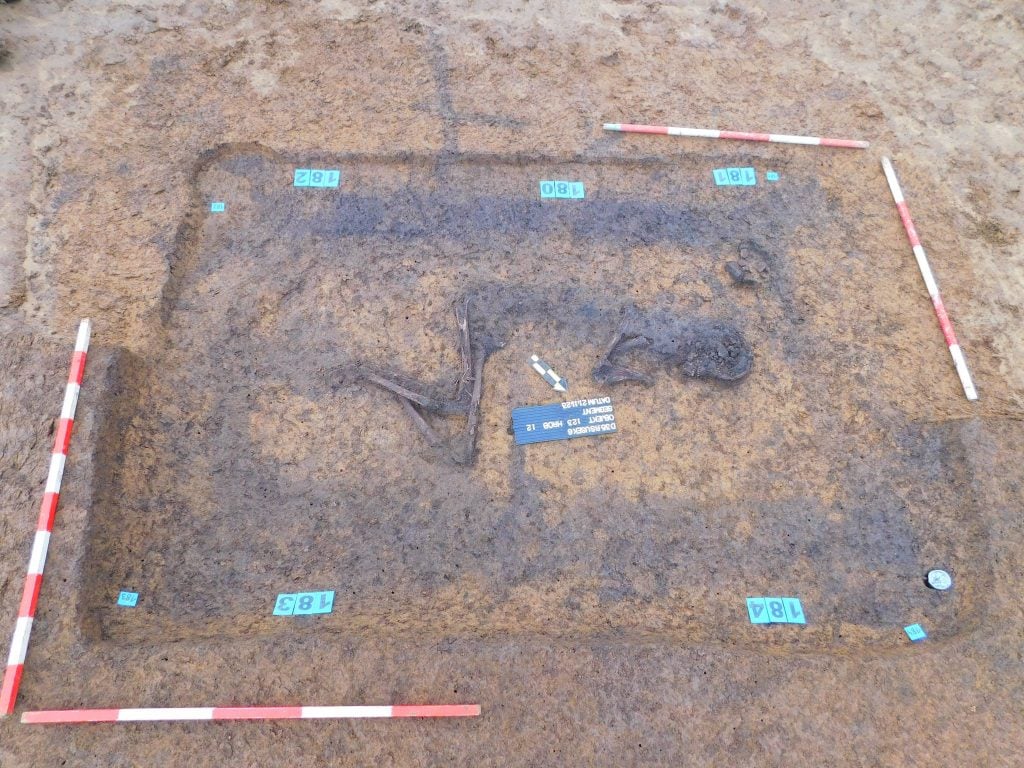Archaeology & History
This Ancient Funerary Monument May Be One of Europe’s Longest and Oldest, Researchers Say
The discovery sheds new light on funerary practices.

The discovery sheds new light on funerary practices.

Adnan Qiblawi

Researchers from the University of Hradec Králové have uncovered a massive 6,000-year-old burial mound in the Czech Republic, which may be one of Europe’s oldest and longest funerary monuments. This extensive burial structure, known as a barrow, measures approximately 620 feet in length and 50 feet in width, and is estimated to date back to the 4th millennium BC.
The date aligns with the period of the Funnel-Beaker culture, which thrived in the region from 3800 to 3350 B.C. This culture is named after the unique funnel-shaped pottery vessels often found as grave offerings in their burial sites.

Details of the objects and body found in a central grave. Courtesy of Department of Archaeology UHK.
The mound was unearthed by the University of Hradec Kralove, Czech Republic during excavations conducted near the border of the villages Dlouhé Dvory and Lípa in the region of Eastern Bohemia, about 55 miles east of Prague. According to Petr Krištuf from UHK’s Department of Archaeology, such a find is unprecedented in the area, with mounds typically discovered in northwestern Bohemia. “This is the longest prehistoric mound not only in our region but likely in all of Europe,” Krištuf noted in a Facebook post.
The burial mound appears to contain at least two graves. These graves likely belonged to individuals of high status, each accompanied by artifacts. The skeletal remains in each grave were both lying on their left sides with their heads facing north. One tomb held a ceramic vessel, while the other was adorned with five flint artifacts.

A grave from the burial site in the vicinity of the long barrow. Courtesy of Department of Archaeology UHK.
Preliminary reports suggest that there may be up to 30 additional graves from the same era surrounding the mound. Researchers speculate that these might indicate the expansion of the burial site over time. “Unlike typical burial mounds in Central Europe, which usually contain one or two burials, this site’s larger number of graves could reveal more about the relationships between those interred and whether they were relatives,” Krištuf said.

A second central burial. Courtesy of Department of Archaeology UHK.
This groundbreaking discovery sheds new light on ancient funerary practices and expands our understanding of early European burial traditions.